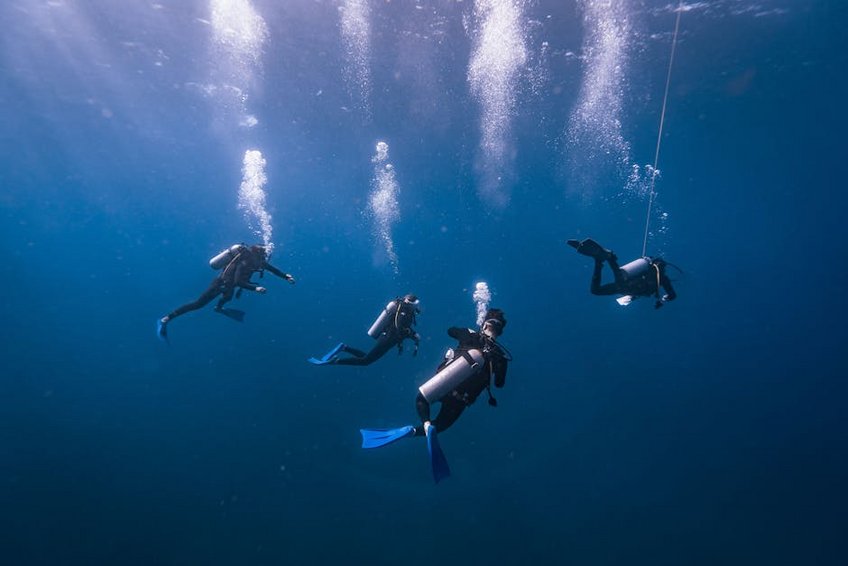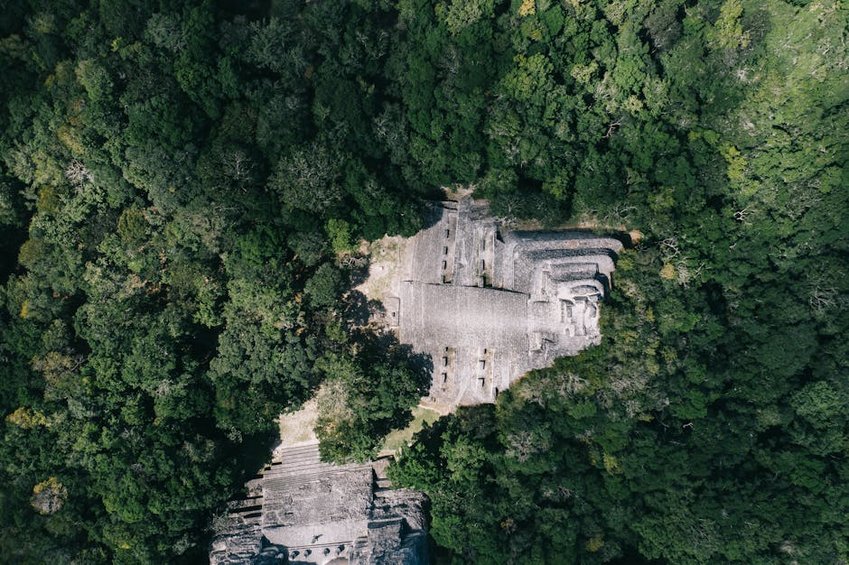Maya Route Culture and Diving in Mexico
Imagine exploring ancient Mayan ruins in the morning and diving into crystal-clear cenotes in the afternoon—this is the magic of the Maya Route culture and diving experience in Mexico’s Yucatán Peninsula. The Maya Route offers an unparalleled combination of archaeological wonders, vibrant indigenous culture, and world-class diving opportunities that will captivate any traveler seeking both adventure and cultural immersion. From the magnificent pyramids of Chichén Itzá to the spectacular underwater caves and coral reefs along the Caribbean coast, this journey connects you with both ancient civilizations and breathtaking marine ecosystems. The region’s unique geography features freshwater sinkholes called cenotes that the Maya considered sacred portals to the underworld, creating diving experiences found nowhere else on Earth. Whether you’re a history enthusiast, culture lover, or diving aficionado, the Maya Route delivers an unforgettable travel experience that satisfies multiple interests in one spectacular destination.
Maya Route Culture and Diving – Essential Information
The Maya Route spans Mexico’s Yucatán Peninsula, Quintana Roo, and parts of Chiapas, offering a diverse range of cultural and diving experiences. This region was the heartland of the ancient Maya civilization, with archaeological sites dating back over 3,000 years, combined with some of the world’s most spectacular diving locations along the Mesoamerican Barrier Reef. The cultural aspect involves exploring magnificent stone cities, learning about contemporary Maya traditions, and experiencing local cuisine, while the diving component includes reef diving, cave diving in cenotes, and exploring underwater museums. The best way to experience the Maya Route is to divide your time between inland cultural sites and coastal diving locations, typically requiring at least 10-14 days to fully appreciate both aspects without rushing.
What You Need to Know About Maya Civilization
- The ancient Maya developed sophisticated writing, mathematics, and astronomical systems while building impressive stone cities throughout the region
- Contemporary Maya communities maintain traditional practices, languages, and craftsmanship, particularly in textiles and ceramics
- Many archaeological sites feature hieroglyphic inscriptions that scholars continue to decipher, revealing detailed historical records
- Budget travelers can manage with $50-75 USD per day staying in hostels, eating at local markets, and using colectivo shared transportation between sites
- Mid-range travelers should budget $100-150 USD daily for comfortable hotels, restaurant meals, guided tours, and organized diving trips
- Luxury experiences cost $250-400+ USD per day featuring boutique hotels, private guides, fine dining, and premium diving operations with small groups
- Mexico Tourism Board Official Website
- UNESCO World Heritage Sites in Mexico
Key Details About Diving Conditions
Diving along the Maya Route offers varied conditions from open ocean reefs to enclosed cenotes with dramatically different visibility, temperatures, and requirements. The Caribbean coast features warm water temperatures ranging from 78-84°F (26-29°C) year-round with visibility often exceeding 100 feet (30 meters). Cenote diving presents unique conditions with haloclines where salt and freshwater meet, creating surreal visual effects. Currents are generally mild along the reef but can vary seasonally, while cenotes have minimal current but require specialized training for cave diving. The region offers diving for all experience levels, from beginner reef dives to advanced technical cave diving certifications.

Maya Route Culture and Diving – Planning Your Trip
Planning your Maya Route culture and diving adventure requires careful consideration of seasonality, transportation logistics, and balancing your time between archaeological sites and diving locations. The region has two main seasons: dry season (November-April) with lower rainfall but higher tourist numbers, and wet season (May-October) with more rain but fewer crowds and lower prices. You’ll need to decide whether to base yourself in one location and take day trips or move between several bases to minimize travel time. Most travelers start in Cancún or Mérida for international flights, then travel to Tulum or Playa del Carmen for diving, and venture inland for cultural sites. Allow flexibility in your itinerary as weather conditions can affect both diving and outdoor archaeological exploration.
Best Time to Visit Maya Route for Culture and Diving
The optimal time for experiencing both culture and diving along the Maya Route is during the shoulder seasons of April-May or October-November. These periods offer a balance between good weather conditions for both outdoor archaeological exploration and diving, with fewer crowds than peak winter months. Water visibility is typically excellent during these months, and temperatures are comfortable for exploring ruins without extreme heat. December through March sees the largest tourist crowds and highest prices, while June through September brings higher humidity and more rainfall, though this rarely disrupts diving activities. For specific cultural events, consider timing your visit with Day of the Dead celebrations in November or various local festivals throughout the year.
Budget Planning and Costs for Maya Route Travel
Essential Preparation Checklist
Preparing for your Maya Route adventure requires both standard travel preparations and specific items for diving and cultural exploration. Ensure your passport is valid for at least six months beyond your travel dates, and check if you need a visa based on your nationality—most Western tourists receive a 180-day tourist permit upon arrival. For diving, bring your certification cards and logbook, though you can rent most equipment locally. Pack lightweight, breathable clothing for hot days, a hat and sunscreen for sun protection, and insect repellent for evenings. Comfortable walking shoes are essential for exploring archaeological sites, and a waterproof bag will protect your electronics during boat trips and diving excursions.
Maya Route Culture and Diving – Top Attractions and Activities
The Maya Route offers an incredible array of attractions spanning ancient archaeological wonders, vibrant contemporary culture, and world-class diving experiences. The cultural highlights include several UNESCO World Heritage sites featuring magnificent pyramids, temples, and ball courts that showcase the architectural and astronomical sophistication of the Maya civilization. The diving opportunities range from exploring the world’s second-largest barrier reef to swimming through mystical cenotes—natural sinkholes that held spiritual significance for the ancient Maya. Beyond these primary attractions, you can experience traditional Maya ceremonies, sample authentic Yucatecan cuisine, visit artisan workshops, and participate in conservation activities that protect both cultural heritage and marine ecosystems.
Must-See Cultural Highlights
Chichén Itzá stands as the most famous Maya archaeological site, featuring the magnificent El Castillo pyramid that aligns with astronomical events during equinoxes. The site also contains the largest ball court in Mesoamerica, the Temple of the Warriors, and the sacred Cenote Sagrado where offerings were made to the gods. Uxmal showcases exquisite Puuc-style architecture with intricate stone mosaics and the impressive Pyramid of the Magician. Tulum offers the unique combination of cliff-top ruins overlooking turquoise Caribbean waters, making it one of the most photogenic archaeological sites. Cobá allows you to climb the tallest pyramid in the Yucatán Peninsula, while Ek’ Balam features exceptionally well-preserved stucco sculptures and recently excavated structures.
Must-Experience Diving Adventures
The Mesoamerican Barrier Reef provides spectacular reef diving with healthy coral formations, abundant marine life including sea turtles, rays, and countless tropical fish species. Cozumel offers world-renowned drift diving along vertical walls covered in colorful sponges and black coral gardens. Cenote diving presents truly unique experiences in freshwater sinkholes with stunning light effects, crystal-clear visibility, and fascinating geological formations. The Museo Subacuático de Arte (MUSA) features over 500 underwater sculptures that have developed into artificial reefs teeming with marine life. Advanced divers can explore underwater caves in the world’s largest connected cave system, while night diving reveals a completely different underwater world with bioluminescent organisms and nocturnal marine creatures.
Maya Route Culture and Diving – Practical Travel Information
Navigating the Maya Route requires understanding transportation options, accommodation choices, and practical considerations for both cultural exploration and diving activities. The region is well-connected by ADO buses that provide comfortable and affordable transportation between major cities and archaeological sites. Rental cars offer more flexibility for reaching remote sites but require careful driving on sometimes poorly marked roads. For diving, most operators provide transportation from major tourist areas to dive sites. Internet connectivity is generally reliable in cities and tourist areas but can be limited at remote archaeological sites. English is widely spoken in tourist areas, but learning basic Spanish phrases will enhance your interactions in local communities and markets.
| Category | Options/Features | Price Range (USD) |
|---|---|---|
| Archaeological Sites | Chichén Itzá, Tulum, Uxmal, Cobá, Ek’ Balam entrance fees | $15-25 per site |
| Reef Diving | Two-tank boat dives including equipment | $80-120 per day |
| Cenote Diving | Specialized guided cenote dives with equipment | $100-150 per day |
| Accommodation | Hostels to luxury resorts across the region | $15-300+ per night |
| Local Transportation | ADO buses, colectivos, rental cars, taxis | $5-50 daily |


